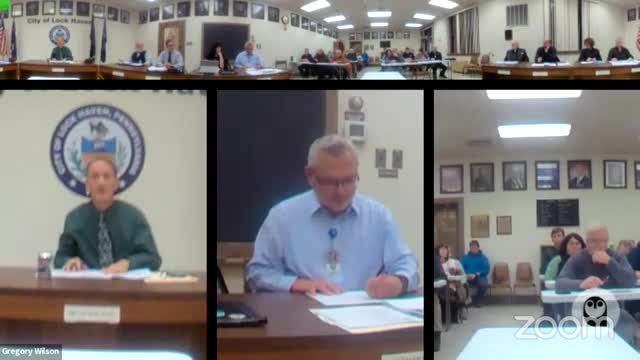City validates solar project on 17 acres adjacent to airport property
December 18, 2023 | Lock Haven, Clinton County, Pennsylvania

This article was created by AI summarizing key points discussed. AI makes mistakes, so for full details and context, please refer to the video of the full meeting. Please report any errors so we can fix them. Report an error »

In a recent meeting of the Lock Haven City Council, discussions centered around the development of solar energy on a 17-acre parcel adjacent to the local airport. This property, which is not owned by the airport but by the city, has raised questions regarding its use and the benefits derived from it.
City officials clarified that while the solar project has received input from the Federal Aviation Administration (FAA) and the Bureau of Aviation (BOA), the land itself was purchased separately and does not belong to the airport. This distinction is crucial, as it means that any revenue generated from the solar panels will not exclusively benefit the airport, despite its proximity.
The council emphasized the importance of ensuring that the solar installation does not interfere with airport operations, particularly concerning glare that could affect pilots during takeoff and landing. The FAA has already reviewed these safety concerns, allowing the project to move forward.
Additionally, the city is currently facing rising electricity costs, with projections indicating a rate of approximately 7 to 8 cents per kilowatt hour in the coming year. This context highlights the potential financial implications of the solar project, as it could help mitigate energy expenses for the city.
While the solar initiative is seen as a step towards sustainability, officials reminded the council that the land's designation and ownership complicate the narrative around its benefits. The city plans to continue working closely with the FAA and BOA to ensure compliance and safety as the project develops.
In summary, the meeting underscored the complexities of land use and revenue generation in relation to the airport, while also addressing broader concerns about energy costs and sustainability initiatives in Lock Haven. As the city moves forward, the implications of this solar project will be closely monitored, particularly regarding its impact on local finances and airport operations.
City officials clarified that while the solar project has received input from the Federal Aviation Administration (FAA) and the Bureau of Aviation (BOA), the land itself was purchased separately and does not belong to the airport. This distinction is crucial, as it means that any revenue generated from the solar panels will not exclusively benefit the airport, despite its proximity.
The council emphasized the importance of ensuring that the solar installation does not interfere with airport operations, particularly concerning glare that could affect pilots during takeoff and landing. The FAA has already reviewed these safety concerns, allowing the project to move forward.
Additionally, the city is currently facing rising electricity costs, with projections indicating a rate of approximately 7 to 8 cents per kilowatt hour in the coming year. This context highlights the potential financial implications of the solar project, as it could help mitigate energy expenses for the city.
While the solar initiative is seen as a step towards sustainability, officials reminded the council that the land's designation and ownership complicate the narrative around its benefits. The city plans to continue working closely with the FAA and BOA to ensure compliance and safety as the project develops.
In summary, the meeting underscored the complexities of land use and revenue generation in relation to the airport, while also addressing broader concerns about energy costs and sustainability initiatives in Lock Haven. As the city moves forward, the implications of this solar project will be closely monitored, particularly regarding its impact on local finances and airport operations.
View full meeting
This article is based on a recent meeting—watch the full video and explore the complete transcript for deeper insights into the discussion.
View full meeting